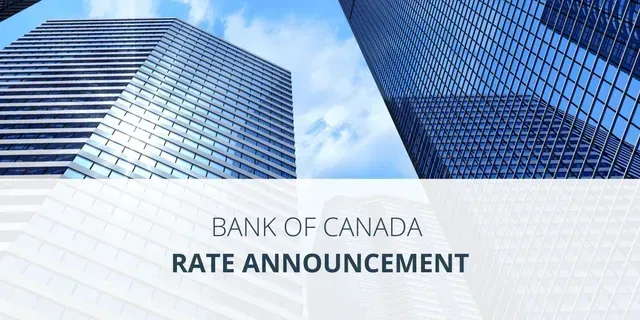Bank of Canada Rate Announcement Sept 8th, 2021
Bank of Canada maintains policy rate, continues forward guidance and current pace of quantitative easing
The Bank of Canada today held its target for the overnight rate at the effective lower bound of ¼ percent, with the Bank Rate at ½ percent and the deposit rate at ¼ percent. The Bank is maintaining its extraordinary forward guidance on the path for the overnight rate. This is reinforced and supplemented by the Bank’s quantitative easing (QE) program, which is being maintained at a target pace of $2 billion per week.
The global economic recovery continued through the second quarter, led by strong US growth, and had solid momentum heading into the third quarter. However, supply chain disruptions are restraining activity in some sectors and rising cases of COVID-19 in many regions pose a risk to the strength of the global recovery. Financial conditions remain highly accommodative.
In Canada, GDP contracted by about 1 percent in the second quarter, weaker than anticipated in the Bank’s July Monetary Policy Report (MPR). This largely reflects a contraction in exports, due in part to supply chain disruptions, especially in the auto sector. Housing market activity pulled back from recent high levels, largely as expected. Consumption, business investment and government spending all contributed positively to growth, with domestic demand growing at more than 3 percent.
Employment rebounded through June and July, with hard-to-distance sectors hiring as public health restrictions eased. This is reducing unevenness in the labour market, although considerable slack remains and some groups – particularly low-wage workers – are still disproportionately affected. The Bank continues to expect the economy to strengthen in the second half of 2021, although the fourth wave of COVID-19 infections and ongoing supply bottlenecks could weigh on the recovery.
CPI inflation remains above 3 percent as expected, boosted by base-year effects, gasoline prices, and pandemic-related supply bottlenecks. These factors pushing up inflation are expected to be transitory, but their persistence and magnitude are uncertain and will be monitored closely. Wage increases have been moderate to date, and medium-term inflation expectations remain well-anchored. Core measures of inflation have risen, but by less than the CPI.
The Governing Council judges that the Canadian economy still has considerable excess capacity, and that the recovery continues to require extraordinary monetary policy support. We remain committed to holding the policy interest rate at the effective lower bound until economic slack is absorbed so that the 2 percent inflation target is sustainably achieved. In the Bank’s July projection, this happens in the second half of 2022. The Bank's QE program continues to reinforce this commitment and keep interest rates low across the yield curve. Decisions regarding future adjustments to the pace of net bond purchases will be guided by Governing Council's ongoing assessment of the strength and durability of the recovery. We will continue to provide the appropriate degree of monetary policy stimulus to support the recovery and achieve the inflation objective.
Information note
The next scheduled date for announcing the overnight rate target is October 27, 2021. The next full update of the Bank’s outlook for the economy and inflation, including risks to the projection, will be published in the MPR at the same time.
SHARE THIS ARTICLE
RECENT POSTS



